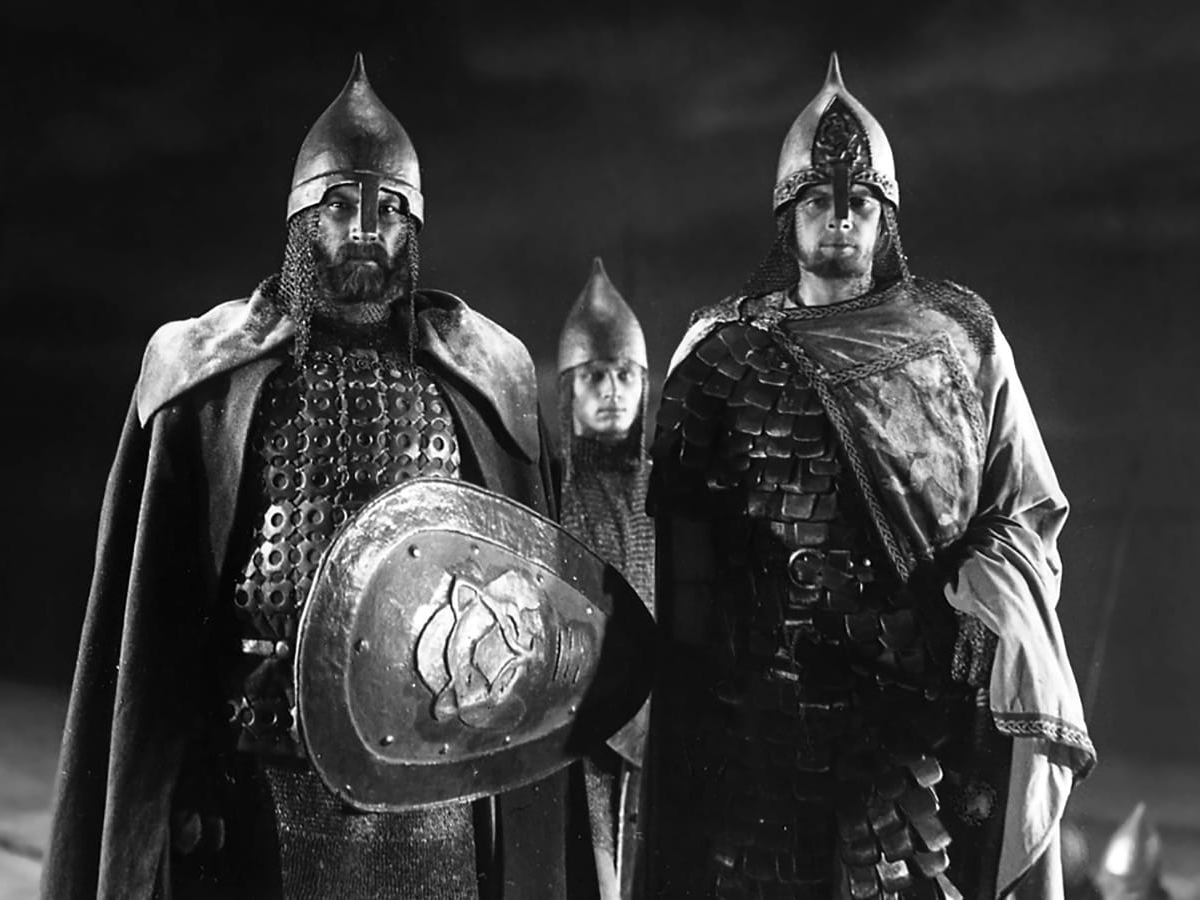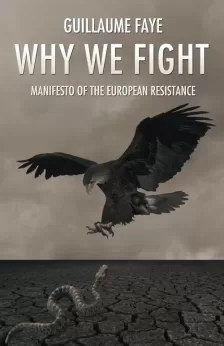The Director
Sergei Eisenstein was born on 10 June 10 1898 in Riga and died on 11 February 1948 in Moscow. For the then young Soviet Union, he represented something similar to the experimental film era that emerged in Germany as an artistic use of the new medium of film. It is also noteworthy that the director intensively engaged with Ludwig Klages’ physiognomic expression studies in a critical manner, which he used in his films to stage the inner experiences of his film characters. The themes of his most famous films also reflect the shifts in the self-image of the Soviet state, for example, in Battleship Potemkin (1925), which became recognised and famous worldwide through its baby carriage scene, and in October (1928), which portrayed the self-image of the October Revolution. The film presented today, Alexander Nevsky, released in 1938, and the subsequent, unfinished film series Ivan the Terrible reflect the endeavour to provide the revolution with a lasting patriotic foundation, primarily relying on historical figures.
Historical Context
Here, we should briefly touch on Russian history and the significance of Prince Alexander Nevsky. Following the fall of Kievan Rus to the Golden Horde and the devastation of some areas, the Swedes first seized the opportunity to annex territories of the old Rus. Nevsky successfully repelled them in the Battle of the Neva, earning him and the Principality of Vladimir a reputation as a famed commander. Subsequently, the Pope and the Livonian Order, recognising the opportunity to annex Russian territory and advance against the pagans — referring to both the Golden Horde and Orthodoxy — initiated action. This led to the Battle of the Ice, through which Nevsky not only became known as the guardian of Russian lands but also as the saintly preserver of Orthodoxy. Over time, Russia would become the main power of Orthodoxy, and Alexander Nevsky would be revered outside Russia as well. For instance, a cathedral was named after him in the Bulgarian capital, Sofia. Before the Battle of the Ice, the population of Novgorod was uncertain about how to deal with the Teutonic Knights. The merchants had good relations with Gotland and the German Hanseatic League, seen at the German Court in Novgorod.
Furthermore, Pskov, occupied by the Teutonic Order, was always seen as a competitor to these trade relations. Many of these merchants were therefore reluctant to repel the invasion and considered cooperating with the Germans, also as a counterbalance to Mongol rule. This can be linked to the theory of ethnogenesis by Lev Gumilyov, which portrays the merchants as passive representatives, while the younger people in Novgorod, including parts of the peasant population, still possessed surplus energy and were in a state expressing readiness for renewal. They rallied behind the renowned Prince Nevsky, who was summoned to defend Rus.
Alexander Nevsky distinguished himself not only as a brilliant strategist but also as a selfless individual and a renewer. He broke with old, narrow, and passive ideas and sought new ways to enable the Russians to preserve the foundations of Russian culture. Lev Gumilyov rightly mentioned Nevsky and the increasingly important role of the Principality of Vladimir as intermediaries between Kievan Rus and the Muscovite state, which shifted power dynamics in the Russian lands.
Through his temporary unification of Rus against internal princely feuds — warned about in the tales of the martyr princes Boris and Gleb and The Tale of Igor’s Campaign — Nevsky established defences against an apparently overwhelming enemy. He also had the instinct to recognise favourable opportunities. Being confident of the fragile cohesion of the principalities, he awaited an opportunity to negotiate a lasting peace with the Mongol ruler Batu. This peace with the Golden Horde, which contrasted with the Pope’s stance by advocating religious freedom, relieved the threat to Orthodoxy, crucial for ethnic identity.
The alliance with the Horde initially guaranteed through Vladimir later facilitated the rise and expanded power of the Grand Duchy of Moscow under Dmitry Donskoi and ultimately the liberation and independence of Rus from the Mongolian Ulus. One of the main themes of the film is therefore Nevsky’s role as a unifier of Russia. Another equally important theme is the often mentioned sacred Russian earth, which must not be trespassed by enemies, closely linked to the condemnation of the aforementioned princely feuds.
The earth was seen as the foundation of the later cult of the Mother of God as transcendent earth, as discussed by the cultural historian and author of Mother Right, Johann Jakob Bachofen, who saw in the figure of Athena a transcendent figure associated with patriarchy. This earth mysticism, as described by Nikolai Berdyaev in The Russian Idea, views the earthly soil as an image and access to the heavenly earth. The earthly soil is glorified by its supramundane connection to the New Jerusalem. This was all the more important since not only did the Pope and the Crusaders see the Russians as pagans, but the Russians also viewed the Crusaders as unbelievers.
Contemporary Historical Reference
The significance of Alexander Nevsky’s actions and those of the mentioned young people as renewers and guardians of the land is also evident in historical reception. Initially, we see a clear connection to Alexander Nevsky in the famous response of Ivan the Terrible to the letter from Kurbski. The creation of the city of Saint Petersburg on the Gulf of Finland by Peter the Great was legitimised as a new centre through the Battle of the Neva against the Swedes and Nevsky’s role in unifying Russia. This can be seen in the relocation of Nevsky’s relics from Moscow to Saint Petersburg and the establishment of a monastery for them.
In the context of the time of the film’s creation, the importance of a stable and defensive central state, as sought by Joseph Stalin, is also crucial. Here, too, we see the core of renewal through young, energetic people and the invocation of Russian earth as a binding element. Not least in the film’s last message, we also see its role in the Great Patriotic War as a focal point for a combat-ready people. It is known that the Soviet government approached Eisenstein to realise this project. However, shortly after its completion, it was no longer shown, as it was thought that the danger of war with Germany had been averted by the Molotov-Ribbentrop Pact. After the start of Operation Barbarossa and the attack by the German Wehrmacht, the film was shown again in cinemas and thus gained increasing fame.








